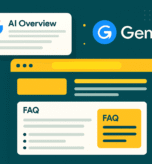In 2025, social media is more than just a place to post; it’s where brands grow, build trust, and connect with their audience. But with so many platforms available, one common question remains: Should your brand focus on Instagram or LinkedIn?
Both platforms offer powerful ways to market your business, but they serve different purposes. Instagram is fast, visual, and trend-driven ideal for grabbing attention and building awareness. LinkedIn, on the other hand, is professional, niche-focused, and built for conversations that create long-term business value.
As AI reshapes how people use social media, understanding the strengths of each platform has become more important than ever. In this blog, we’ll explore the key differences between Instagram and LinkedIn, and help you decide which platform is the best fit for your brand’s goals in 2025.
Understanding Each Platform’s Purpose
In 2025, choosing the right platform for your brand is about understanding what each platform is built for. Instagram and LinkedIn serve very different purposes, and your decision should depend on your goals, audience, and content style.
Instagram – Visual, Trendy, and Fast-Paced
Instagram is a visual-first platform where content is short, engaging, and designed to grab attention quickly. From Reels and Stories to carousels and posts, it’s built for brands that want to be part of trends, connect with younger audiences, and grow fast.
- Great for: Personal brands, lifestyle products, fashion, creators, and eCommerce
- Content style: Creative, visual, emotional, and informal
- Marketing strength: High reach and engagement through trending content
- Audience: Mostly 18–35 years old, active and visually driven
LinkedIn – Professional, Purposeful, and Trust-Building
LinkedIn is where professionals connect, learn, and do business. It’s designed for B2B marketing, thought leadership, and building long-term relationships. Unlike Instagram, LinkedIn values depth over speed—here, content often includes expert insights, stories, and tips.
- Great for: Consultants, agencies, service providers, and personal brands
- Content style: Informative, professional, authentic, and niche-focused
- Marketing strength: Lead generation, brand trust, and expert positioning
- Audience: 30+ professionals, decision-makers, industry leaders
Instagram vs LinkedIn for Business: What’s the Real Difference?
| Platform | Best For | Content Style | Audience Type | Marketing Goal |
| Lifestyle brands, creators | Visual, short-form | Younger, casual users | Brand awareness, visibility | |
| B2B, professionals, service-based | Text + visuals, value-driven | Business owners, professionals | Leads, trust, authority |
Key Differences: Content, Audience & Results
| Factor | ||
| Content Style | Visual, casual, short-form | Professional, detailed, value-driven |
| Audience Mindset | Relaxed, browsing, trend-seeking | Focused, learning, networking |
| Engagement Type | Likes, comments, views | Comments, messages, profile visits |
| Best For | Products, lifestyle, creators | B2B, services, thought leadership |
| Conversions | Traffic, product sales | Leads, trust, partnerships |
- Instagram is best for visual and lifestyle-focused brands that want quick attention and traffic. It works well for products, trends, and younger audiences.
- LinkedIn is better for professional brands, B2B services, and building trust. It’s ideal for generating leads, sharing knowledge, and long-term growth.
Choosing the Right Platform for Your Brand
Before you decide whether to focus on Instagram or LinkedIn in 2025, take a moment to understand your brand’s goals. Not every platform fits every business. The right choice depends on what you offer, who you’re speaking to, and what results you want to see.
1. What do you offer — a product or a service?
- If you sell physical products, Instagram is a great place to showcase them with photos, videos, and trends.
- If you offer services like consulting, training, or B2B solutions, LinkedIn is better for building trust and reaching decision-makers.
2. Who is your audience?
- If your audience is young, visual, or trend-driven, Instagram is where they’re most active.
- If your audience includes professionals, business owners, or teams, LinkedIn gives you access to the right network.
3. What is your brand’s tone?
- Brands that are casual, creative, and lifestyle-focused often do well on Instagram.
- Brands with a formal, informative, or expert-driven voice fit naturally on LinkedIn.
4. What results do you expect?
- If your goal is brand visibility, follower growth, or quick engagement, choose Instagram.
- If you want leads, partnerships, or long-term relationships, LinkedIn is likely the better choice.
Can You Use Both Instagram and LinkedIn Together?
Yes, you can. You don’t have to choose only one platform. If used well, Instagram and LinkedIn can work together to grow your brand in different ways. The key is to know what kind of content works best on each platform and how to share your ideas in a way that fits both.
Why Using Both Makes Sense
Using both platforms lets you reach two types of audiences:
- Instagram is great for fast-moving, visual content that builds awareness.
- LinkedIn is great for sharing insights, building trust, and connecting professionally.
How to Repurpose Content for Both
You don’t need to create new content every time. You can take one idea and share it in different ways.
- Share a short video on Instagram
- Turn the same topic into a helpful text post on LinkedIn
What to Share Where
- Instagram is best for short videos, behind-the-scenes content, and eye-catching visuals.
- LinkedIn is better for expert advice, business stories, and thoughtful posts.
Instagram and LinkedIn are different, but they can work together. You don’t need to post everything on both platforms. Just share the right content in the right place and let each platform support your brand in its own way.
Real-World Examples: How Brands Use Instagram and LinkedIn Successfully?
Looking at real examples can help you understand how different types of brands use Instagram and LinkedIn to grow in 2025. Both platforms can bring strong results when used with the right strategy.
Brands Winning on Instagram
- Nike
Nike uses Instagram to connect with younger audiences through short videos, inspiring posts, and powerful storytelling. Their Reels and Stories often highlight athletes, product launches, and behind-the-scenes moments—making their content relatable and shareable. - Glossier
This beauty brand grew its customer base by posting real user photos, skincare tips, and product tutorials. They keep their tone friendly and visual, which works well with Instagram’s fast and engaging format.
Note: Use Instagram to stay trendy, build emotional connections, and make your brand feel human. Visuals matter more than words here.
Profiles Growing Fast on LinkedIn
- Neil Patel
Neil shares SEO tips, marketing trends, and personal business lessons on LinkedIn. His posts are short, helpful, and easy to read—making them highly shareable in the B2B space. - Sarena Williams (Personal Brand Consultant)
Sarena grew her brand by sharing real stories from her work, along with lessons and client success. She uses LinkedIn to build trust and get inbound leads without spending on ads.
Note: LinkedIn works well for professionals who want to teach, inspire, or build authority in their field. Use real stories, useful advice, and consistent posting to grow.
What You Can Learn
- Instagram works best when your content is fun, fast, and visually strong. Great for product-based and lifestyle brands.
- LinkedIn is better for thoughtful, expert content that builds trust. Great for personal branding, B2B, and service providers.
Final Thoughts: Where Should Your Brand Focus in 2025?
In 2025, both Instagram and LinkedIn offer unique ways to grow your brand but they serve different goals.
If your focus is on building brand visibility, staying on top of trends, and connecting with a younger audience through visuals, Instagram may be the right platform. On the other hand, if your goal is to build professional trust, share expert content, and generate quality leads, LinkedIn is likely a better fit.
You don’t need to be active on every platform. Choose the one that matches your brand’s voice, audience, and goals. It’s better to show up consistently in one place than to spread yourself too thin across many.
Start small, stay clear about your message, and focus on building strong connections whether through Instagram’s creativity or LinkedIn’s credibility. In the end, the best platform for your brand in 2025 is the one that helps you grow with purpose.




